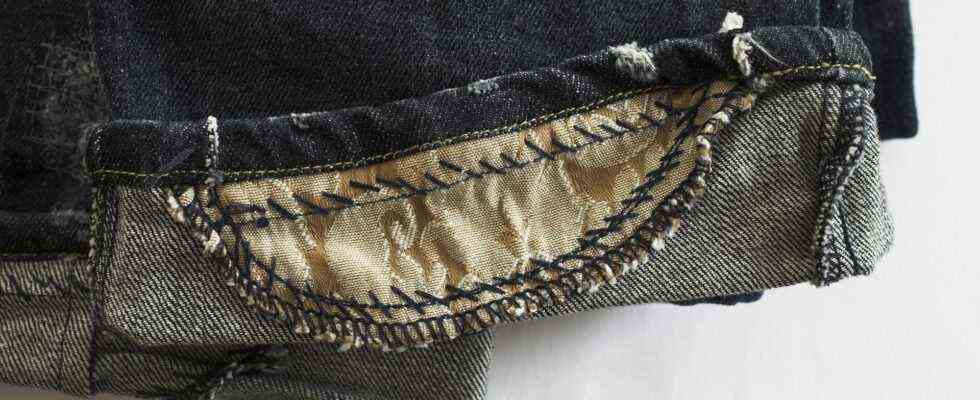Status: 10/22/2021 1:38 p.m.
Large fashion retailers like Zalando now also offer repair services for holes in jeans or dresses. Is there a growing desire among consumers to wear clothes for as long as possible?
“Every second consumer believes that brands and retailers could act more sustainably if they offered reform services – so let’s test this theory,” says Laura Coppen, Head of Circularity at Zalando. In practice this is called “Care & Repair”, a pilot project started in Berlin. Regardless of whether the trousers or dress are cracked, the sneakers are dirty or faded, the heel has expired – if you still want to wear your clothes, you can have them repaired via Zalando.
The mail order company is working with the start-up Save Your Wardrobe, whose platform can be used to book repairs online. The dispatch takes place via the Zalando logistics network. The companies determine the costs for repair or cleaning. Sole Fresh is one of four so far. It charges between 20 and 45 euros for the cleaning and reprocessing of sneakers. There are also delivery costs and service fees for customers.
It used to be a matter of course
The family company Schöffel can look back on more than 200 years of history as a clothing company. It has offered a repair service since the first hiking pants, which were produced over 50 years ago. “Repairs used to be a matter of course, but in the meantime they have faded into the background and are now becoming more relevant again with a growing awareness of sustainability,” explains spokeswoman Katrin Lörch. Schöffel now also offers cleaning, impregnation and modification services.
The company is therefore not an isolated case. Other providers show on their websites how bicycle bags or jeans can be repaired quickly and easily. “For many companies, this is practiced sustainability and is part of their corporate philosophy,” says a spokeswoman for the General Association of the German Textile and Fashion Industry.
Criticism of “Fast Fashion”
The so-called “fast fashion”, the ever faster change of fashion items, ensures that clothes are worn shorter and shorter: What does not like ends up in the bin. More than 70 percent of the fiber produced annually by the global fashion industry ends up in the trash, according to an estimate by the UK-registered charity Ellen MacArthur Foundation. Not even one percent is reused for new clothing.
The Cologne fashion label Armedangels criticizes exactly that. “The fashion industry lacks scalable solutions to cope with the growing mountains of unwanted clothing,” explains its corporate responsibility manager Lavinia Muth. The company has therefore recently started offering shirts with a “Circularity.ID”. With the help of this NFC tag, Armedangels tests systems for sorting used textiles, reselling and high-quality recycling. The aim is to establish a real cycle system in the fashion industry. The project will initially run until the end of next year.
Clothing as “a piece of history”
Repair, reuse, upcycling, recycling – the Berlin internet platform A-gain Guide, for example, offers guidance on this. A digital city map can be used to search for individual offers such as tailoring, bag repairs, flea markets or rental services – for every district. The self-appointed textile rescuers, supported by the Berlin Senate, believe “in a future in which our garments are loved again, lead the longest possible life and preserve a piece of history – which is passed on from generation to generation and recycled or even upgraded”.
Zalando doesn’t go that far. “Care & Repair” is part of the company’s sustainability strategy. In the short term, the mail order company wants to extend the lifespan of at least 50 million fashion items by 2023.

